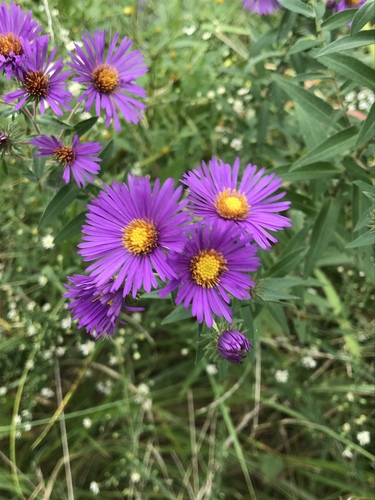Curating Needs
Last updated January 11, 2019
Partially using this as a note to self, but thought I'd throw these out there rather than only squirrel the links away as bookmarks. To any curators or potential-curators looking for a task, here are:
- Stranded taxa that have observations (89 taxa)
- Spam patrol (a lot)
- Unresolved flags (thousands)
If you're not a curator but interested in lending a hand with the site taxonomy and/or other needs, read through the Curator Guide (https://www.inaturalist.org/pages/curator+guide) and shoot an email to help@inaturalist.org. : )
Common Flag Resolution Recommendations
Pornographic images or anything that needs to be deleted swiftly - You can hide this type of inappropriate content by flagging as spam (hides from anyone who isn't an iNat curator/admin). Then email help@inaturalist.org requesting deletion.
* Spam - 99+ times out of a 100, spam flags should be left unresolved. iNat's definition of spam is anything clearly intended to make money. If it is actual spam, like blocks of text intended to drive search engine rankings, links to commercial websites, or blatant product advertisement, leave the flag unresolved.
* Flagged as spam, but it's not spam - There is a "3 strikes" rule with spam flags. If a user's comments, observations, messages, or other content is flagged as spam 3 times, their account is suspended. Sometimes people are suspended when they shouldn't be! If a comment or message is flagged, I've found that more often than not, those flags are false positives. If a comment doesn't look like spam, resolve the flag. If a message is flagged and the user looks legit, there is a boilerplate response here. If inappropriate content is flagged as spam, resolve the spam flag and reflag as inappropriate if needed. Spam flags should only be used for content intended to make money.
* Duplicate observation - Check if it's actually a duplicate. Sometimes the user has uploaded the same photo but observed 2 different organisms. Otherwise, iNat staff have instructed us to flag duplicates and leave the flags unresolved.
* Missing taxon or taxon changes - follow the Curator Guide and add the taxon or commit the taxon change, if appropriate. Be sure to check the taxonomic policies every once in a while as they do change.
* Not an organism - If it's a new user, guide them toward appropriate use of iNat and mark it as no evidence of organism in the Data Quality Assessment section (DQA).
* Observation of a human - just ID as human and resolve the flag.
* Trolling - It's usually best to just ignore someone who's clearly trolling. You can use the DQA to mark it as not wild or no evidence of organism if appropriate. If it's a pattern of bad behavior, especially if it's affecting other users' observations, send an email to help@inaturalist.org explaining the situation, with URLs.
* Observation rather than photo is flagged as copyright infringement: Resolve the flag and flag the photo(s) as copyright infringement directly.
* Incorrect, but well-intentioned ID is flagged: Resolve the flag and let the user know that IDs shouldn't be flagged unless they're clearly malicious or purposefully incorrect.
* Photo on taxon page incorrectly identified: Remove the photo and/or let them know how they can adjust the photos themselves.
* Taxon needs to be marked as native/introduced in a certain place: Change the status and provide instruction on how they can do this themselves, which are listed here: https://www.inaturalist.org/pages/curator+guide#flags
Previously on: Dealing with low quality observations and inappropriate content on iNaturalist











